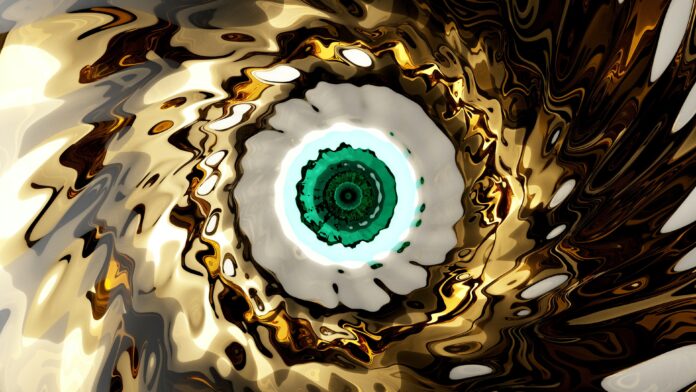In the quest for space exploration, human beings have always sought to uncover the mysteries of our celestial neighbors. From the majestic beauty of the moon to the enigmatic allure of distant planets, our thirst for knowledge knows no bounds. As we continue to push the boundaries of space exploration, one of the most intriguing prospects is the possibility of discovering water sources on the moon and other celestial bodies. Among the various ideas that have been proposed, Lunar Seltzer, a concept that combines science and technology with human curiosity, stands out as a potentially groundbreaking discovery.
Lunar Seltzer, Lunar Seltzer, Lunar Seltzer – the phrase echoes in the minds of scientists and space enthusiasts alike as they imagine the tantalizing prospect of effervescent water on the moon. The idea revolves around the possibility of extracting water, either in liquid or frozen form, from the lunar surface and utilizing it to create carbonated water or seltzer. This seemingly simple concept has far-reaching implications for future space missions, human settlements beyond Earth, and possibly even for our understanding of the cosmos.
The notion of water on the moon has been a topic of fascination for decades. Evidence gathered from various lunar missions, such as the Lunar Prospector and the Lunar Reconnaissance Orbiter, has suggested the presence of water ice in permanently shadowed regions at the lunar poles. These regions, known as lunar cold traps, are areas that never receive sunlight, and temperatures within these areas can plummet to as low as minus 250 degrees Fahrenheit (-157 degrees Celsius). It is believed that water molecules from comets and other celestial sources may have been trapped in these frigid regions over billions of years. If confirmed, the existence of water on the moon would revolutionize our approach to lunar exploration and pave the way for more ambitious missions, such as establishing a lunar base or even launching manned missions to Mars and beyond.
Lunar Seltzer represents a significant leap in our understanding of lunar water resources and their potential utility for future space missions. The concept involves extracting water from lunar cold traps and utilizing it to produce carbonated water, taking advantage of the carbon dioxide already present in the moon’s exosphere. The carbon dioxide gas could be collected and combined with the extracted water in a specialized pressurized system, triggering a chemical reaction that results in the formation of carbonic acid and, ultimately, carbonated water.
The practical applications of Lunar Seltzer extend beyond quenching the thirst of astronauts on extended lunar missions. In fact, this innovation could have profound implications for life support systems, agriculture, and even propulsion technologies in space. Carbonated water, when broken down into its constituent elements, hydrogen, and oxygen, could serve as a vital source of breathable air for astronauts, while its hydrogen component could be harnessed for generating electricity or fueling spacecraft. Furthermore, the oxygen produced through this process could potentially contribute to the establishment of self-sustaining habitats on the moon or other celestial bodies.
However, Lunar Seltzer is not without its challenges and potential risks. The extraction of water from lunar cold traps would require specialized equipment and delicate procedures to ensure the preservation of the lunar environment. Any misstep could result in contaminating the very resource we seek to exploit or damaging the lunar surface. Additionally, the transportation and implementation of the necessary equipment would demand significant resources and innovation.
Another crucial aspect to consider is the ethical dimension of Lunar Seltzer. As we venture into uncharted territories, it is essential to balance our pursuit of scientific knowledge and technological advancement with responsible practices that prioritize the protection of celestial bodies and their ecosystems. This means adopting stringent measures to minimize the environmental impact of our activities on the moon while adhering to international agreements and protocols related to space exploration.
Despite the complexities and uncertainties, the idea of Lunar Seltzer remains an alluring vision that captivates the imagination of scientists, engineers, and dreamers alike. It symbolizes humanity’s relentless pursuit of knowledge, our determination to reach beyond our home planet, and our quest to uncover the secrets of the cosmos. Whether it becomes a reality or not, Lunar Seltzer serves as a beacon of innovation, inspiring future generations to push the boundaries of human exploration and unravel the mysteries of our universe.
Lunar Seltzer, Lunar Seltzer, Lunar Seltzer – three simple words that encapsulate a revolutionary concept in space exploration. As we continue our journey into the cosmos, it stands as a testament to the audacity of human curiosity and the potential of science and technology to transcend earthly boundaries. Whether it becomes a reality or remains a captivating vision, Lunar Seltzer will undoubtedly leave its mark on the annals of space exploration, inspiring generations to come to reach for the stars and explore the extraterrestrial bubbly frontier.
Lunar Seltzer has the potential to redefine our understanding of space resources and open up new possibilities for sustainable human presence beyond Earth. The idea has sparked interest from space agencies, private companies, and research institutions, prompting collaborative efforts to explore the feasibility of the concept. Scientists and engineers are continually working to design and test innovative technologies that can extract, process, and utilize lunar water to create carbonated water, a seemingly small step that could have significant implications for future space missions.
Beyond its practical applications, Lunar Seltzer also captures the public’s imagination and fosters a sense of wonder about the cosmos. The idea of sipping carbonated water on the moon evokes a sense of adventure and a connection to the celestial bodies that have fascinated humanity for millennia. It serves as a reminder that space exploration is not just about scientific advancement; it is also about exploring the human spirit, our dreams, and our collective aspiration to explore the unknown.
As we contemplate the possibilities of Lunar Seltzer, we must also recognize the significance of space collaboration and international cooperation. Space exploration has traditionally been a realm where countries compete with each other, but the potential of lunar water resources and the challenges of extracting them require a joint effort. International cooperation not only shares the burden of the enormous costs and risks associated with space exploration but also fosters peaceful collaboration among nations with diverse scientific expertise and technological capabilities.
To bring Lunar Seltzer from concept to reality, there are numerous hurdles to overcome. We need advancements in robotics and automation to develop efficient and reliable systems for extracting water from the moon’s surface without human intervention. Additionally, we must address the ethical considerations surrounding lunar resource extraction, ensuring that our actions are sustainable and respect the integrity of the lunar environment.
The research and development of Lunar Seltzer have the potential to spur innovation in various fields, from materials science to renewable energy technologies. The challenges we face in space exploration often drive us to think creatively and develop solutions that have far-reaching benefits back on Earth. Lunar Seltzer could inspire a new generation of scientists, engineers, and explorers to tackle some of humanity’s most pressing challenges and pioneer advancements that will shape our future.
As with any ambitious venture, there are skeptics who question the practicality and feasibility of Lunar Seltzer. Some argue that the resources required for such an endeavor could be better allocated to solving pressing issues on Earth. However, space exploration has always been about pushing the boundaries of what is possible and seeking knowledge beyond our immediate surroundings. The pursuit of Lunar Seltzer represents humanity’s innate desire to explore and expand our horizons, even if the immediate rewards may not be immediately apparent.
In conclusion, Lunar Seltzer holds the promise of unlocking the secrets of lunar water resources and harnessing them for a wide range of practical applications. From space missions to sustainable habitats and beyond, the implications of this concept are vast and potentially transformative. As scientists and engineers continue to study and develop Lunar Seltzer, they embark on a journey that transcends the realms of science and technology, igniting the spark of human curiosity and the quest for discovery. Whether it becomes a reality or remains an inspiring vision, Lunar Seltzer serves as a testament to the indomitable spirit of human exploration and our determination to chart a course into the cosmos. As we venture forth into the unknown, Lunar Seltzer, Lunar Seltzer, Lunar Seltzer will echo in the annals of space history, reminding us of the boundless potential of human ingenuity and our collective journey to explore the frontiers of space.






















